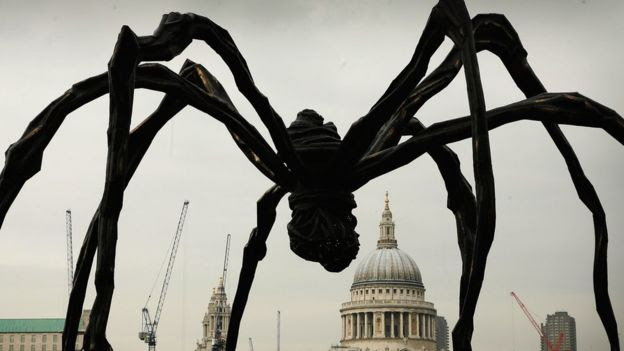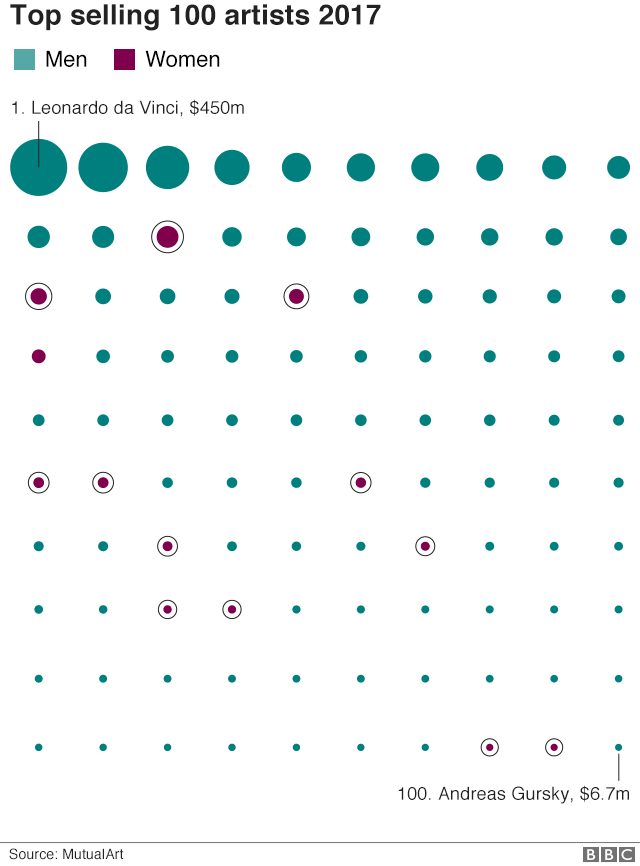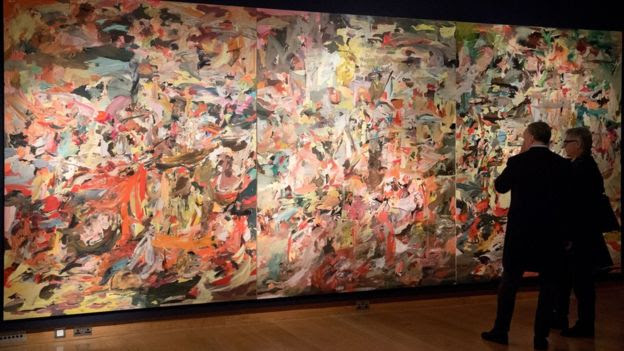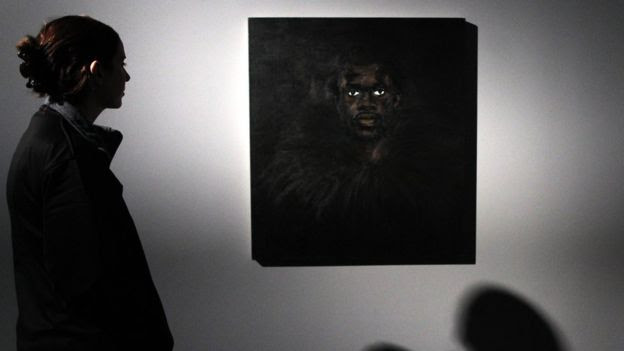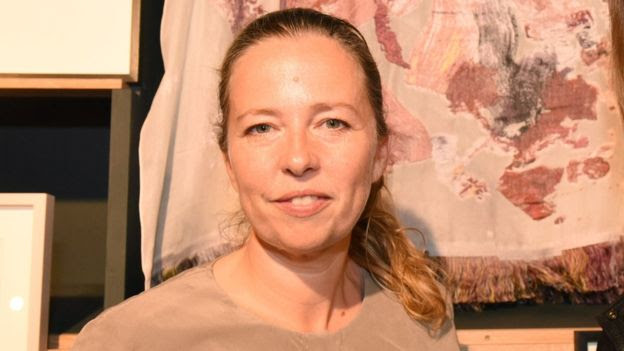Image copyrightGETTY IMAGES
2017 auction sales = $15.9m (£11.9m)
Dame Barbara (1903-75) was a British sculptor whose signature works were large, rounded blocks that evoke the shapes of nature and the human form - with holes in the middle.
The other British women in the overall top 100 were Bridget Riley and Cecily Brown.
Presentational grey line
The imbalance between men and women stems from a "systemic gender bias" in the factors that go into deciding an artist's value - which has existed for many years - according to MutualArt data analyst Kate Todd.
For decades, key museums and galleries have focused on exhibiting and collecting work by male artists, and have normally been run by men. Dealers and private collectors have also been predominantly male.
Anna Brady, who is The Art Newspaper's deputy art market editor, says: "You've had centuries of male collectors, male art historians and male critics, generally.
"I'm not saying they're incapable of appreciating female artists, but I think it brings with it a certain bias. Female artists have often gone under the radar.
"Things like having children has affected female artists over the years - and they just haven't been appreciated or have been taken less seriously over the centuries and the decades of the 20th Century."
In December, a study suggested that people do not rate a work of art as highly if they believe it is by a woman. That shows "a general bias", Brady says.
Oliver Barker, senior international specialist of contemporary art at Sotheby's, says there has been "institutional oversight" in the art world in the past, but that a "revolutionary change" is under way.
In the UK, the directors of Tate, the Serpentine and the Whitechapel galleries are all women, four of the last six Turner Prize winners have been women, and Barker says there are now more female art collectors and patrons.
"Historically the art world probably has been guilty of oversight," Barker says. "I think it's fair to say that in the '50s or the '60s, it was just harder for female artists to break through in a male dominated market.
'Got to be realistic'
"If you look at museum collections, the history of post-war collecting at the Tate of the Metropolitan or the Pompidou is probably largely male. Whether it's institutions or art schools or auction houses, we're trying to redress that balance."
But while he stresses that gender isn't considered when an auction house puts a price on an artwork, there are complex factors at play when deciding on something's value, and prices have "got to be based on reality".
"We can only reflect the market for a particular artist," he says. "[The price] has got to be based on what is the precedent for that particular art, what is the breakout appeal or opportunity that's here?
"We're in the business of also satisfying our vendors and purchasers so it's not just a question of trying to redress any balance of prejudice that historically has been institutionalised."
Gender inequality clearly isn't just a problem in auction houses - just 11% of the highest-grossing movies in the US last year were directed by women, while women make up just 15% of corporate boards around the globe.
'Signs of change'
In the art world, Anna Brady believes the gender balance is better in the primary market - the commercial galleries where art is initially sold - but that the pace of change of waiting for that to filter through to auctions is going to be "painfully slow".
Galleries and dealers are making an effort to push artists who were overlooked in the past and those who are now emerging, according to Kate Todd.
"There's some really great momentum behind contemporary female artists at the moment," she says. "I think it's going to take some time for them to reach their upper level - to break into that core group of consistently top achieving artists, simply because the volume of work isn't there yet.
"But there are some really exciting signs of female artists who are changing the landscape and who give some hope that there's going to be some disruption in that top group sooner rather than later."
Presentational grey line
Five artists under 50 who are rising up the auction rankings:


